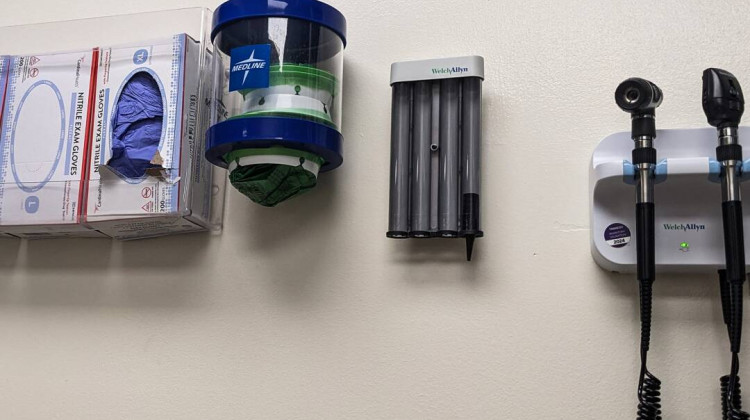
East Chicago Mayor Anthony Copeland speaks at a press conference with Gov. Eric Holcomb on Feb. 20, 2017.
Lauren Chapman/IPB NewsEast Chicago Mayor Anthony Copeland seems to have changed his mind about what should be done with the area where the former West Calumet Public Housing Complex once stood. But it’s unclear if that will change the Environmental Protection Agency’s cleanup plans for the site.
Copeland originally said the site should be residential, but if a commercial or industrial company wanted to move in that the city would consider it. That led the EPA to add a contingency to its plan — which would have allowed the lead and arsenic-contaminated site to be cleaned to less stringent commercial/industrial standards.
READ MORE: East Chicago Residents, Mayor At Odds Over Superfund Cleanup Plan
But in a recent letter, the mayor says he supports a residential cleanup and also sides with the majority of residents who want all of the contamination gone. In fact, he says he's advocated for a thorough cleanup all along.
But Maritza Lopez, who is the president of the East Chicago Calumet Coalition Community Advisory Group (CAG), says the EPA still recommended cleaning soil only up to two feet deep at its most recent meeting.
“I think they play games, I’ll be upfront — and I’m saying as a resident, not as the CAG president,” Lopez says.
She says the EPA’s top priority is supposed to be public health and the environment.
Lopez says the Lake County surveyor also expressed concerns that if the EPA didn’t clean up all of the contamination, some of it would seep into groundwater and pollute nearby waterways.
Attorney Debbie Chizewer represents residents in the CAG through Northwestern University Law School's Environmental Advocacy Clinic. She says leaving contaminated soil would shift costs to future residential developers.
“Extra steps would need to be taken in order to excavate soil below 24 inches because that soil is still contaminated," Chizewer says.
Chizewer says even institutional controls — like signage telling developers not to dig below two feet — can fade out of the public’s memory over the years. She says if the EPA goes with its current plan, it’s likely the public will get re-exposed to lead and arsenic contamination somewhere down the line.
The EPA could decide to change its cleanup plan for the former housing complex after reviewing the public comments due March 13.
We couldn’t reach Mayor Copeland for an interview. The EPA declined to be interviewed and said it would not discuss specific comments at this time.
When asked whether it will get rid of the contingency in its current cleanup plan, EPA officials said the agency hasn’t made a decision yet, but assume the site of the former housing complex would be residential.
In a press release on Monday, the EPA listed progress on the USS Lead site as one of the agency’s many accomplishments with Superfund cleanups last year.
Indiana Environmental reporting is supported by the Environmental Resilience Institute, an Indiana University Grand Challenge project developing Indiana-specific projections and informed responses to problems of environmental change.
 DONATE
DONATE







 Support WFYI. We can't do it without you.
Support WFYI. We can't do it without you.